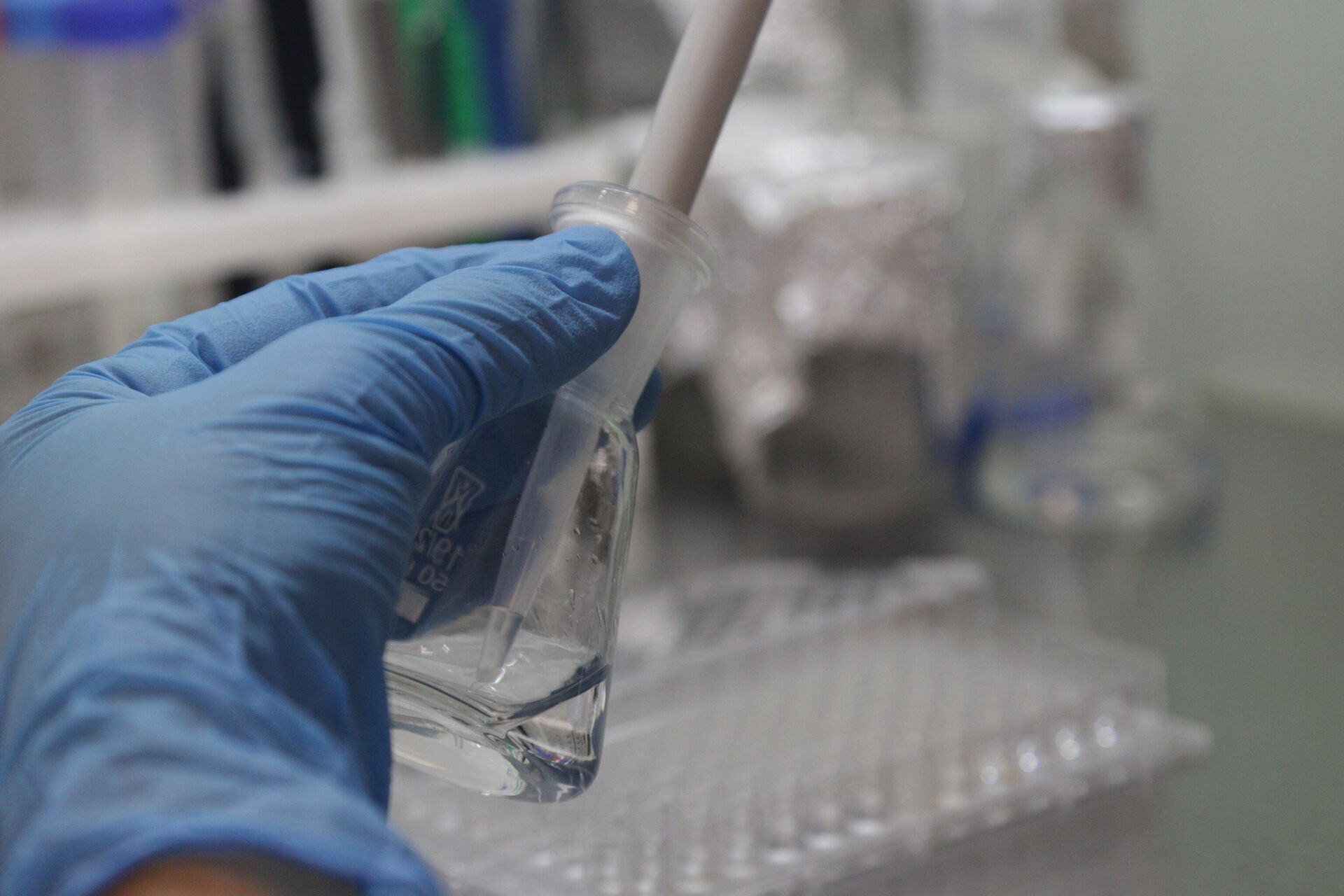Russian Scientists Whip Up New Anti-Bacterial Hydrogel Out of Whey Protein
08:18 GMT 15.09.2022 (Updated: 11:13 GMT 15.09.2022)

© AP Photo / Saratov State University
Subscribe
Aside from being used to sterilize areas of invasive intervention during the period after surgery, the new gel could also be used in reconstructive cosmetic surgery.
Researchers at Saratov State University have developed a hydrogel based on whey protein, which they say has a lasting antiseptic effect and can be used for soft tissue reconstruction.
The researchers’ invention is cheaper than hydrogels based on hyaluronic acid or lactic acid, and is practically harmless for a human body as the gel destroys bacteria but has no adverse effect on the tissue.
“We get the protein in the form of dry powder and dissolve it in water at a ratio of 40/60. The antibiotic is then added, so that no substance is lost during the manufacture. Then the solution is heated to the required temperature and we get a solid stable form of hydrogel,” Valentina Plastun, a researcher at the university’s Remote-Controlled Theranostic Systems Laboratory, said.

Remote Controlled Theranostic Systems Laboratory
© Photo : Saratov State University
As Plastun explained, the primary purpose of this new hydrogel is to sterilize areas which have undergone invasive surgery, with the substance the researchers have produced able to secrete enough of the antibiotic cefazoline for 48 hours to suppress the spread of microorganisms at the area of the human body which has been treated.
The researchers are also considering the possible application of their creation in the field of reconstructive cosmetic surgery.
“One of our material’s characteristics is that it can become solid in any required form and can remain solid for more than two months, so it can serve as a temporary replacement for lost tissue,” Plastun said. “This helps ensure that no deformation occurs around the damaged area, and to ease the healing process.”
The project is currently at the preliminary research stage as researchers at the university continue to study the substance using various microorganisms and cell cultures.

